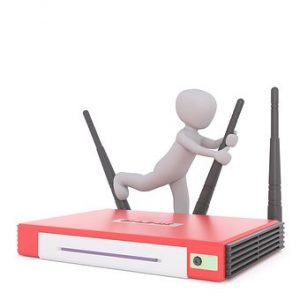Asus Router Login
In our connected world, reliable and secure internet access is essential for a wide range of activities, from streaming entertainment, conducting virtual meetings, to casual web browsing. Among a sea of options, Asus routers stand out for their robust performance and exceptional security features.
To fully harness the power of your Asus router, you need to understand how to effectively manage its settings. A critical part of this is mastering the Asus router login process, dealing with potential login issues, and knowing how to change your router’s password, especially in situations where you might have forgotten it.
In this blog post, we will take you step by step through the process of how to login to Asus router, troubleshoot common login issues, and change your router’s password when needed. Our aim is to simplify the Asus router login process and provide you with practical solutions to common login issues.
So, stay tuned as we unpack the ins and outs of Asus login, tackle common issues that might prevent you from successfully logging into your Asus router, and guide you on how to change your router’s password. By the end of this guide, you’ll be well-prepared to handle any Asus router login issues and maintain a secure and efficient network.
How to login to Asus Router:
Accessing the settings of your Asus router is a key step in managing and optimizing your home network. Here’s a step-by-step guide on how to proceed with the Asus router login process:
- Connect to Your Network: Ensure your device (PC, laptop, smartphone) is connected to your Asus router network. You can do this wirelessly or using an Ethernet cable.
- Open Web Browser: On your connected device, open a web browser. This could be Chrome, Firefox, Safari, or any other browser of your choice.
- Enter Router IP: In the browser’s address bar, type your Asus router’s default IP address, typically 192.168.1.1 or 192.168.0.1. This will bring you to the Asus login page.
- Enter Asus Router Login Credentials: Here, you will need to enter your Asus Router username and password. If you haven’t changed these, you should use the default password for Asus router, which is typically ‘admin’ for both the username & password fields.
- Access Router Settings: Once you’ve entered the correct Asus router login credentials, you should have access to your router’s settings. From here, you can manage and customize your network according to your needs.
If you’re unable to log in using the default password for Asus router, you may have previously changed it and forgotten the new one. In this case, you will need to reset the router to restore the default password for Asus router. Afterward, during the Asus login process, you can set a new Asus Router password. Remember to choose a strong password to ensure your network’s security.
Keep in mind managing your Asus Router password is crucial. Regularly changing it can help prevent unauthorized access. Should you encounter any issues during the Asus router login process, please refer to our next section of this page.
How to fix Asus Router Login:
When trying to log in to your Asus router, you might occasionally face some challenges. Don’t worry, as these issues are typically easy to resolve. Here are some common issues with their solutions when trying to login to Asus router:
- Incorrect Asus Default Router Login Credentials: One of the most common issues when trying to log in to Asus router is incorrect login credentials. The solution is simple: double-check your username and password. If you haven’t changed them, the default Asus router login is usually ‘admin’ for both the username and password. If you can’t remember changing the default Asus login, a factory reset might be needed. In the next section of the page, we will guide you on how to change Asus Router Password if you have forgotten your login credentials.
- Router IP Address Issue: Another common issue when trying to log in to Asus router is entering the incorrect IP address. Ensure that you’re entering the correct IP address, typically 192.168.1.1 or 192.168.0.1, to access the Asus default router login page.
- Connection Issues: If you’re facing connection issues while trying to log in to Asus router, check if your device is properly connected to the router’s network. A stable connection is necessary to reach the default Asus router login page.
- Browser Cache Problem: Occasionally, an overloaded browser cache could prevent you from being able to log in to Asus router. In such cases, clearing your browser’s cache and cookies might resolve the issue, allowing you to access the Asus default router login page.
- Outdated Firmware: Outdated firmware might cause issues when you try to login to Asus router. Regularly updating your router’s firmware can help prevent such issues and provide you with a smooth experience when accessing the default Asus login.
Remember, patience and a bit of troubleshooting can help resolve most issues related to the Asus router login.
How to Change Asus Router Password:
Forgetting your Asus router credentials can be frustrating, but the solution is simpler than you might think. Here’s a step-by-step guide:
- Resetting the Asus Router: To reset Asus router password, look for the small reset button located at the back of the router. Using a pointed object, press and hold the Asus router reset button for about 10 seconds until the router’s lights start to flash. This operation resets your Asus router credentials to the default one.
- Logging in with the Asus Router Default Password: After you reset Asus router password, connect your device to your router’s network. Open your favorite web browser & enter the Asus router’s default IP address, usually 192.168.1.1 or 192.168.0.1. This will take you to the Asus router’s login page. Use the Asus router default login password to log in, which is typically ‘admin’ for both username and password.
- Changing the Asus Router Default Password: Once you’ve successfully logged in using the Asus router default password, navigate to the ‘Administration’ section, then the ‘System’ tab. This is where you can enter a new password, effectively changing the Asus router default login password to one of your choosing.
- Saving the New Password: After inputting your new credentials, click ‘Apply’ to save the changes. This action completes the task of how to change Asus router password. From now on, instead of using the Asus router default login password, you’ll use your new password to log in.
Remember, when you decide to change Asus router credentials, it’s best to create a strong, unique password that’s difficult to guess. If you encounter any issues during the process to reset Asus router password, we suggest you to please reconsider this section. Their goal is to ensure your online experience is as secure and seamless as possible.
Conclusion:
Managing your Asus router, from the initial setup to securing your network, is a crucial task that ensures optimal performance and security. Mastering the Asus router login process, being able to tackle common login issues, and knowing how to reset Asus router password when needed are all integral parts of this management.
The ability to log in to your Asus router allows you to access a host of settings to personalize and secure your network. However, it’s not uncommon to encounter issues or forget your password during the Asus login process. Knowing how to reset Asus router password becomes invaluable in such situations.
Remember, while the Asus router default password helps in the initial setup and in case of forgotten passwords, it’s advisable to change it to a unique, strong password to prevent unauthorized access. This simple step of resetting and changing your password can go a long way in securing your network.
If you encounter any difficulties at any point during the Asus login process or while attempting to reset Asus router login password, to hesitate to re considering the outlined steps for password reset. Your seamless and secure internet experience is just a few clicks away. To know more about Asus router and resolve any other related issue, please visit the Asus Support Page.
